Water has a quiet power in outdoor spaces. The sound of trickling, the movement of light across a surface, the way it softens the surrounding air—all of this can be achieved with a well-placed fountain. And you don’t need professional landscaping or expensive materials to get started.
This article explores over 20 outdoor fountain ideas that range from minimal and modern to rustic and reclaimed. Whether you’re working with a patio, backyard, or small balcony, there’s a concept here that fits.
Why DIY a Fountain?
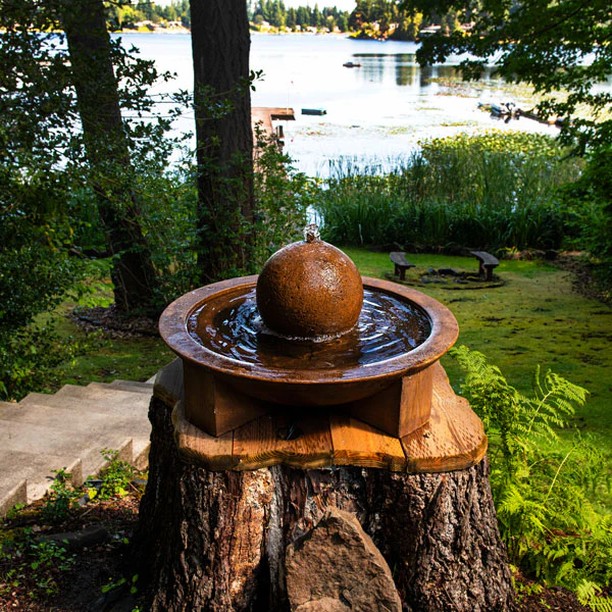
- Affordable: Many designs use items you already have—planters, basins, old tools.
- Customizable: You control the size, sound, and aesthetic.
- Low-maintenance options: Solar pumps or hidden reservoirs can simplify upkeep.
- Therapeutic: Moving water can reduce ambient noise and promote relaxation.
- Attractive to birds and pollinators: A functional part of your ecosystem.
Let’s break down the major categories you can build from.
Simple Container Fountains
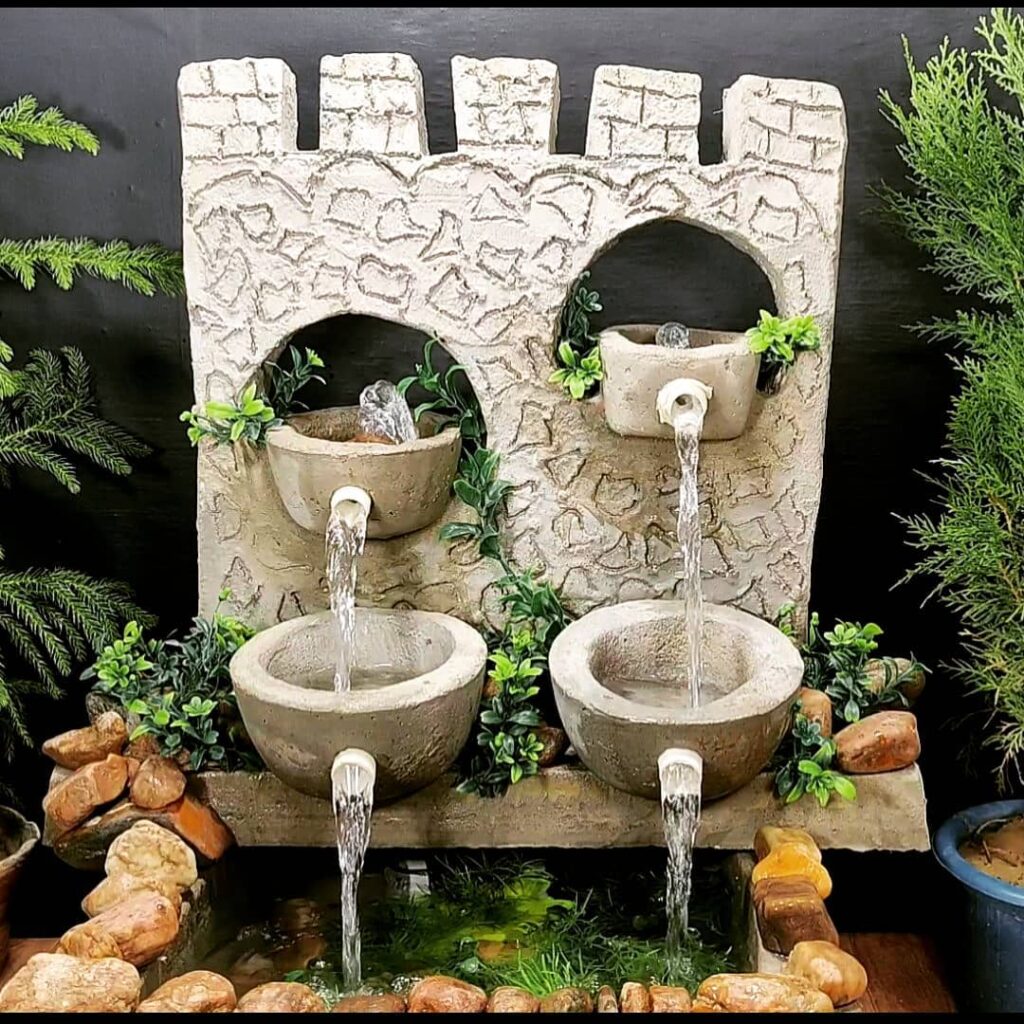
Perfect for beginners, these use one or two vessels and a small submersible pump.
Common setups include:
- Ceramic pots stacked with internal tubing
- Galvanized buckets filled with polished stones
- Wooden barrels paired with a copper spout
- Concrete bowls with floating lilies or water plants
Pro tip: hide the pump cord by running it through a back notch or buried conduit.
Tiered Bowl and Planter Designs
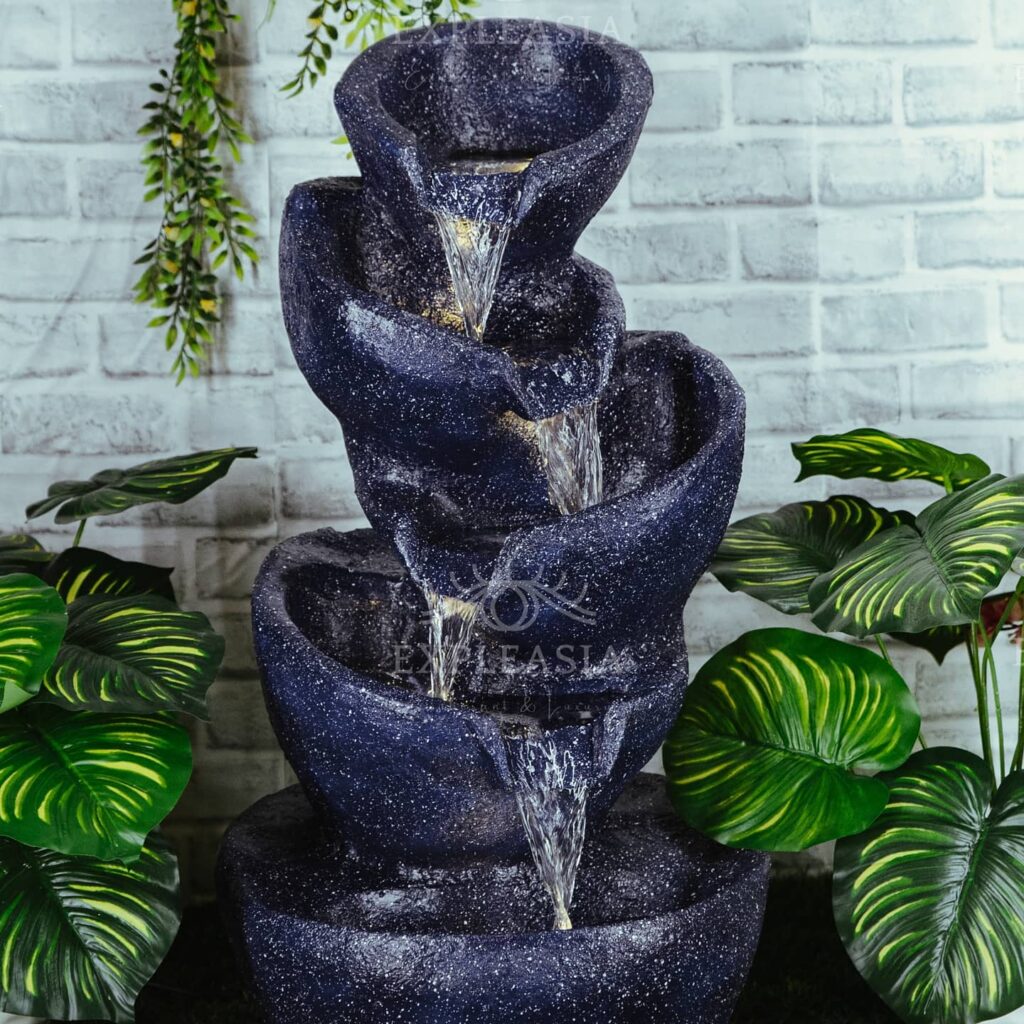
Use gravity and elevation to let water cascade from one level to the next.
- Terracotta pots placed upside-down to create tiers
- Planters of different sizes nestled for depth and balance
- Lightweight resin bowls for modern styling
These are especially effective when placed near seating areas or garden paths where the movement is visible.
Recycled and Repurposed Features
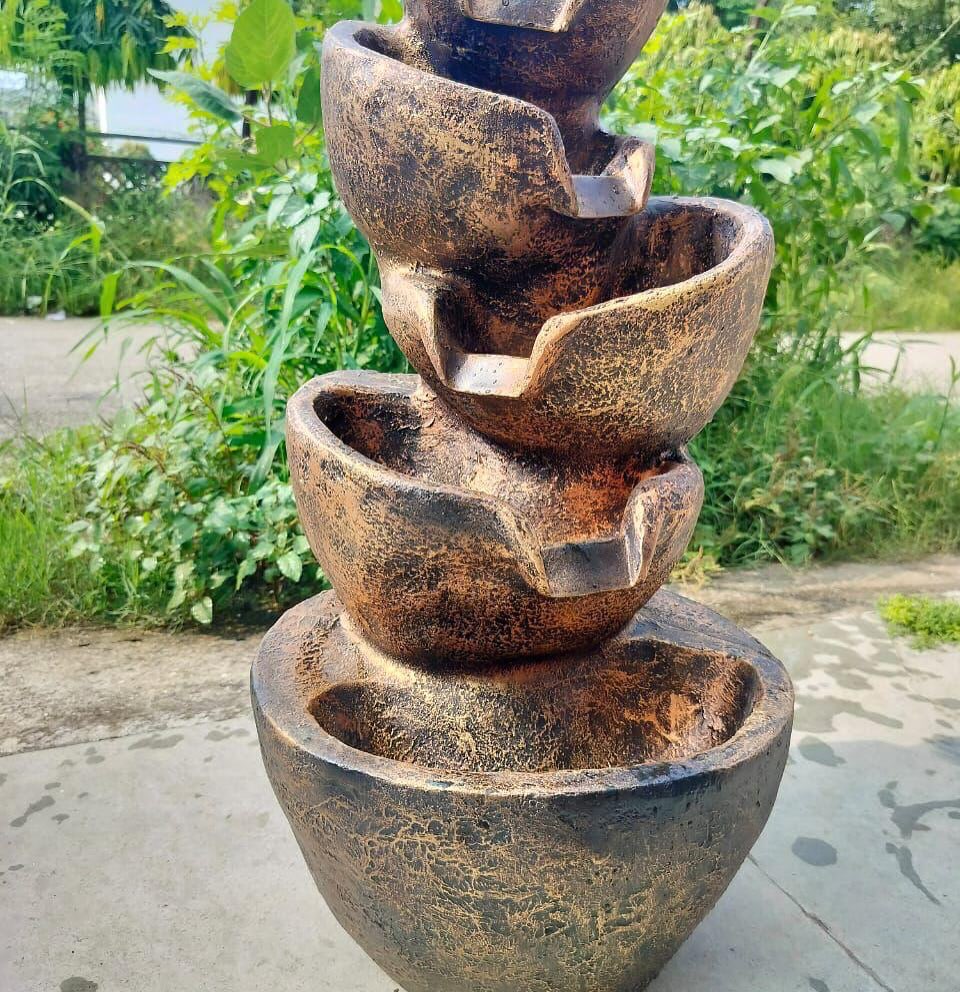
This is where DIY shines—transforming what you already have into something unexpected.
- Water flowing from an old watering can
- Stacked teapots or kettles creating a whimsical stream
- Converted wine barrels or milk churns
- Sinks or bathtubs turned into large basin fountains
These work best when you lean into their original materials and let their history show.
Wall-Mounted or Vertical Fountains
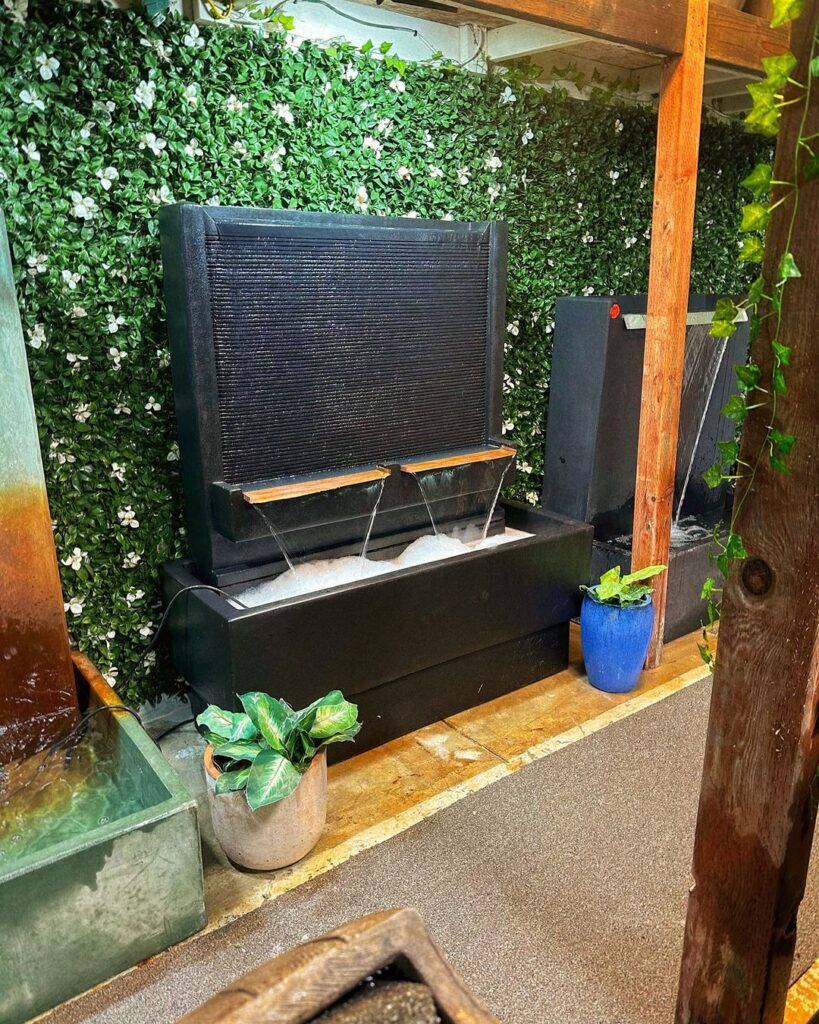
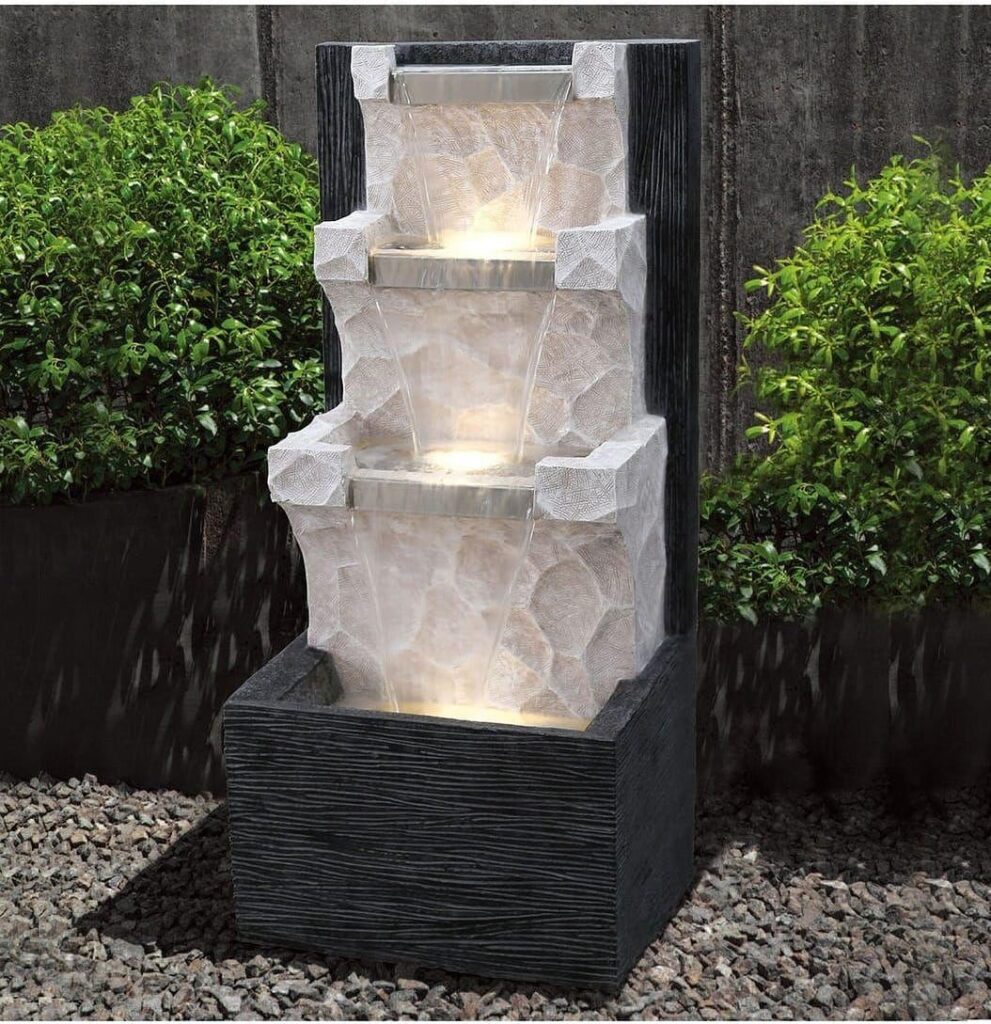
Ideal for small outdoor areas or patios where ground space is limited.
- Stone or concrete backing with copper spouts
- Wood-framed panels with recirculating systems
- Recessed setups built into walls or fences
- Minimalist metal pipes releasing water over slate
These styles work well with climbing vines or hanging planters around them.
Naturalistic and Rock-Based Fountains
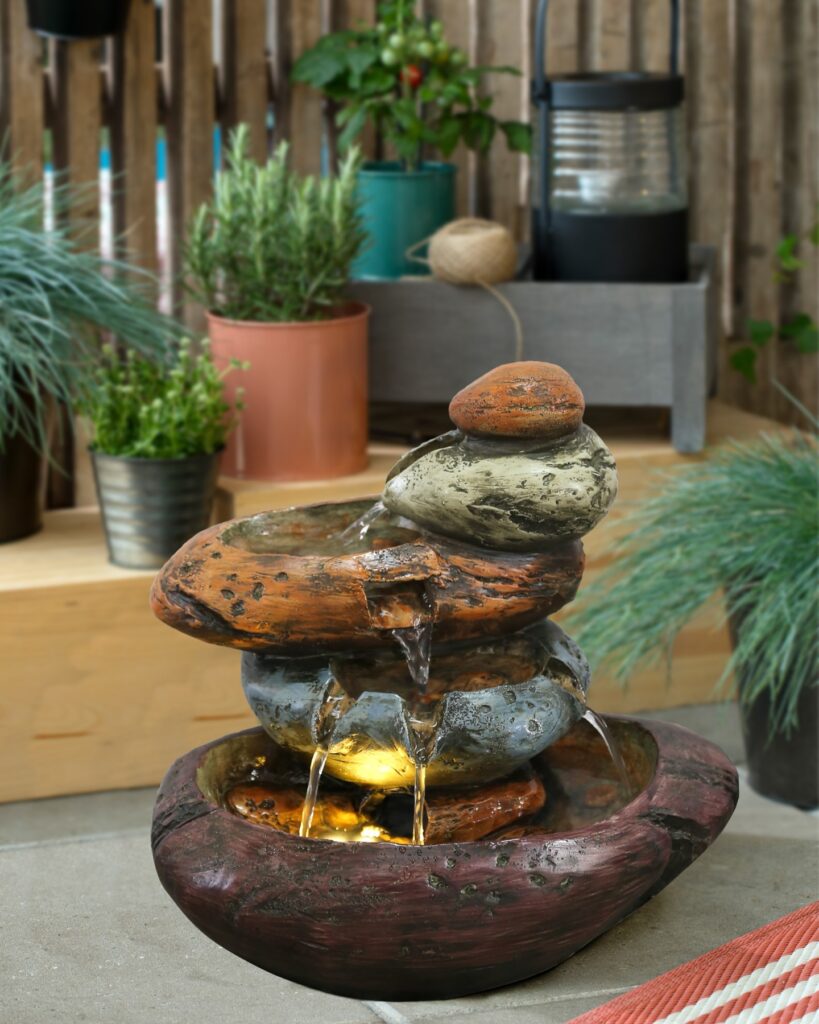
Designed to look like they belong in the landscape.
- Water bubbling up from a buried stone reservoir
- Stacked slate or river rock with hidden tubing
- Boulder fountains with drilled cores
- Dry creek beds ending in a small catch pool
For these, use native stone or blend textures to make it feel integrated.
Solar-Powered Floating Fountains
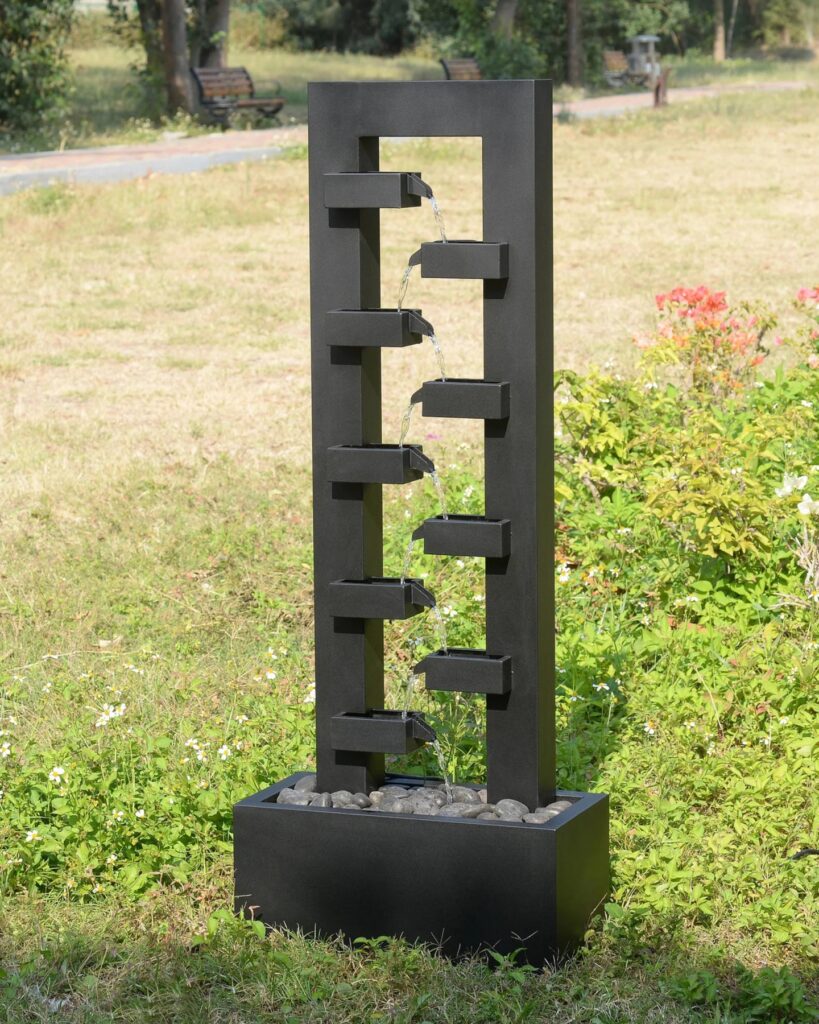
If you want a hands-off solution, solar fountains require no wiring and little setup.
- Floating disks for birdbaths or shallow ponds
- Mini panel-powered bubblers
- Built-in solar pump planters
They’re also a good seasonal solution—easy to remove or reposition as needed.
Japanese-Inspired and Zen Fountains
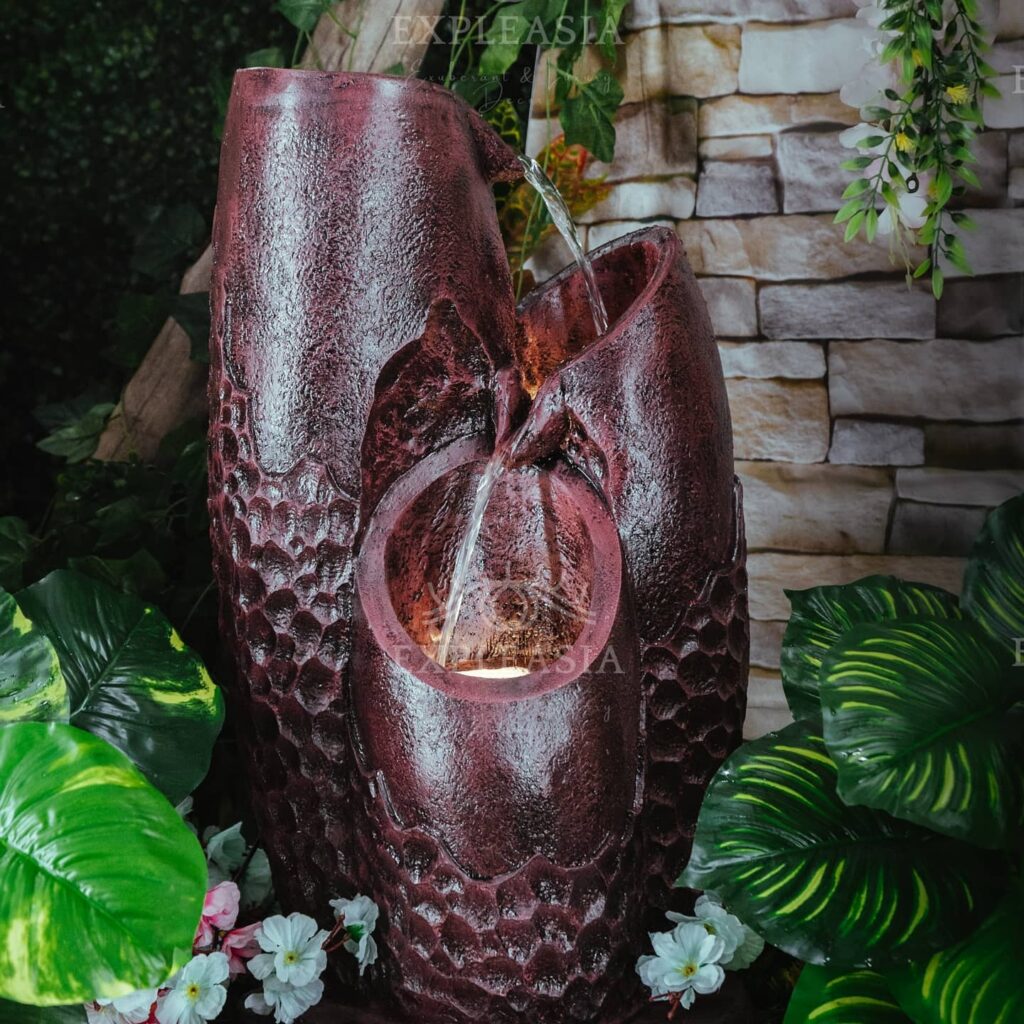
Balance, symmetry, and quiet presence define these designs.
- Bamboo spouts and basins
- Minimalist stone basins with overflow rings
- Tōrō-style (stone lantern-shaped) water features
- Simple black pebbles with slow-flowing water over granite
These pair beautifully with moss, ferns, and raked gravel if you’re building a calm corner.
Tips for Long-Term Success

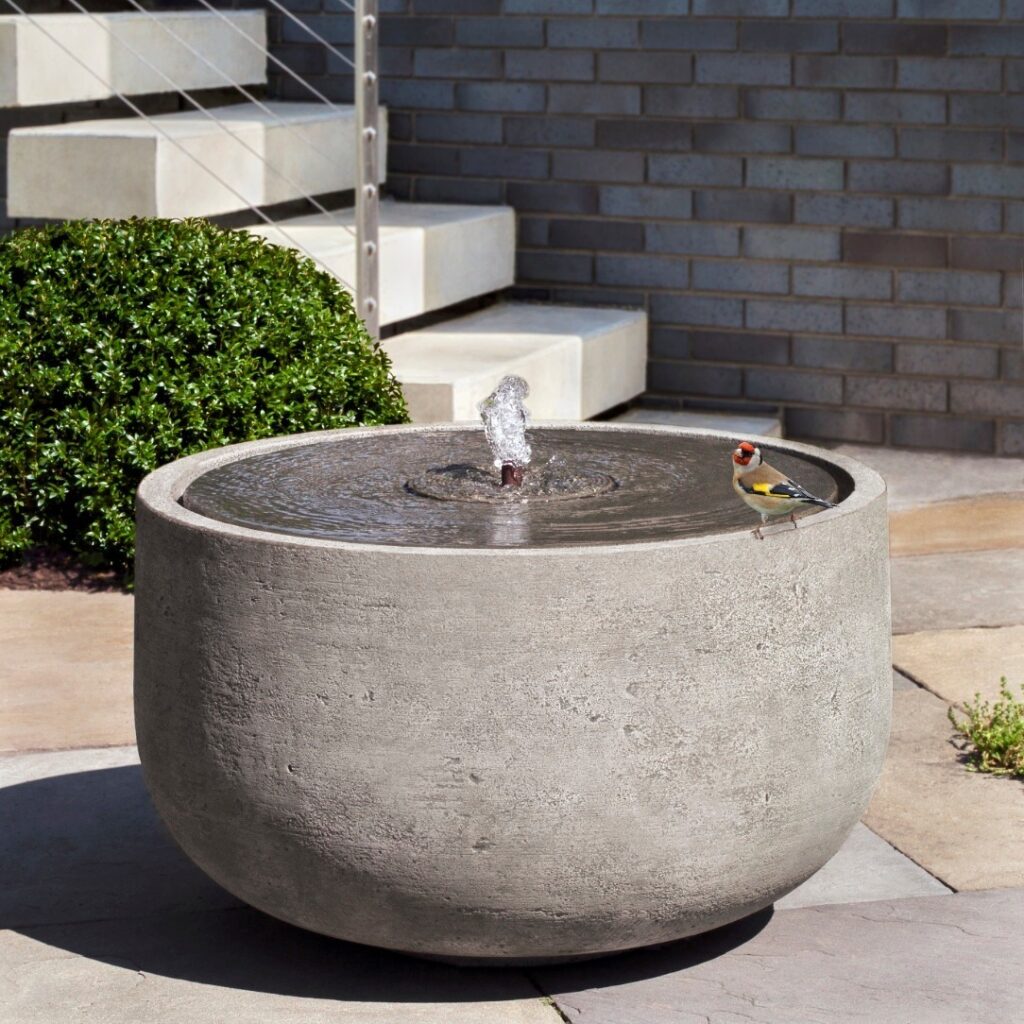
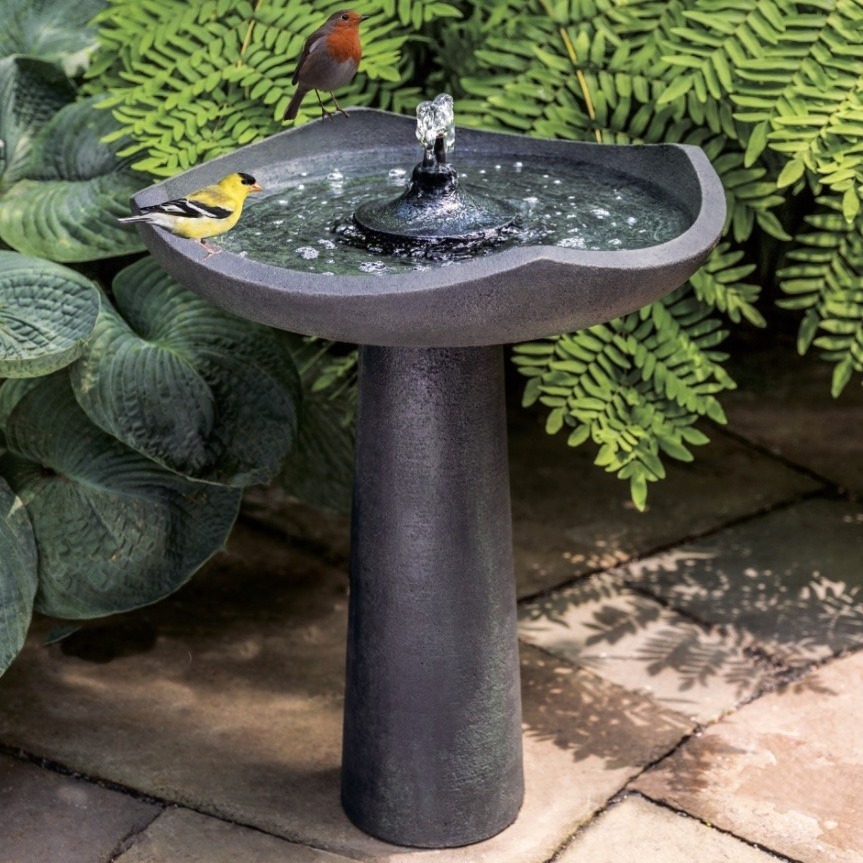
- Keep your pump clean – debris buildup can reduce performance
- Use distilled water – reduces algae and scaling
- Anchor tubing with rocks or hidden clips – keeps everything in place
- Place near a power source – or choose solar to avoid extension cords
- Consider sound – test water height and fall distance to get the tone you want (gentle trickle vs. stronger stream)
And remember: even small fountains can be adjusted with minor changes in angle or flow strength.
Choosing the Right Spot

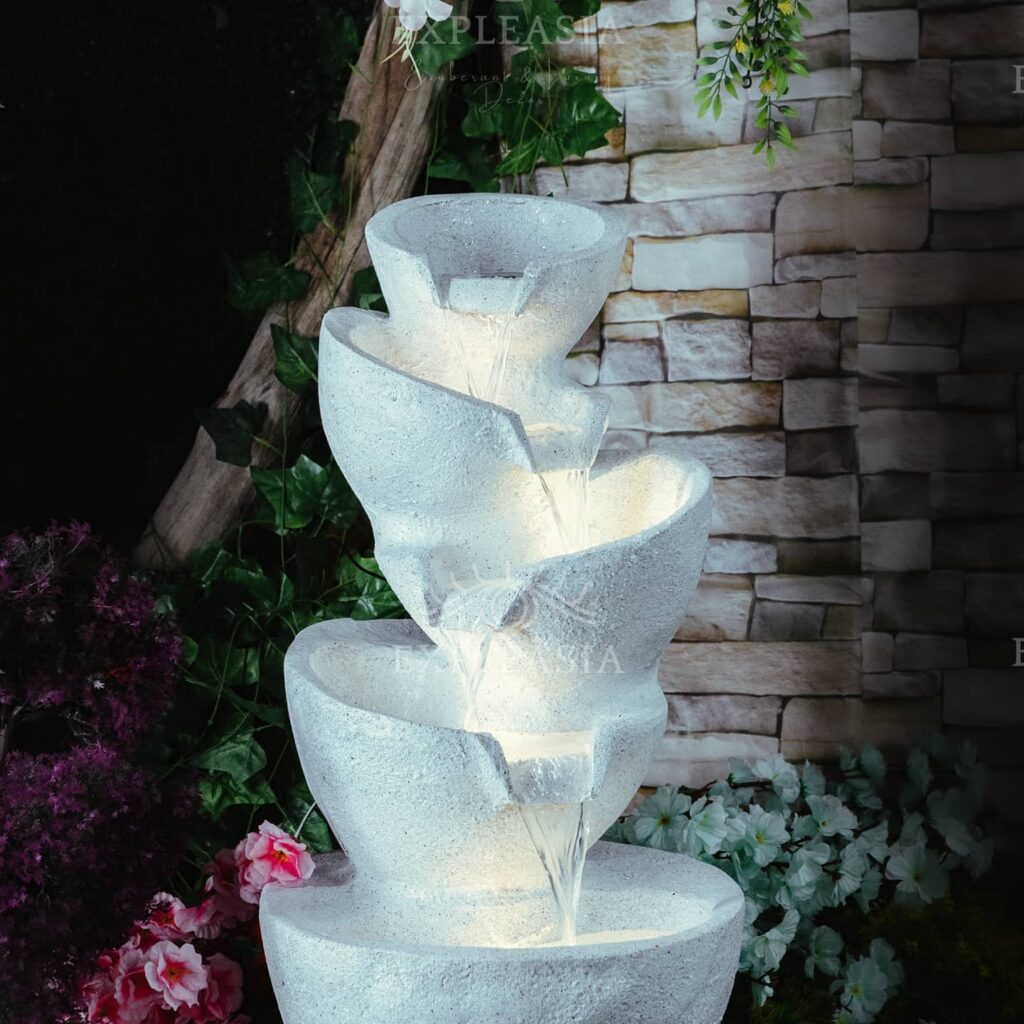
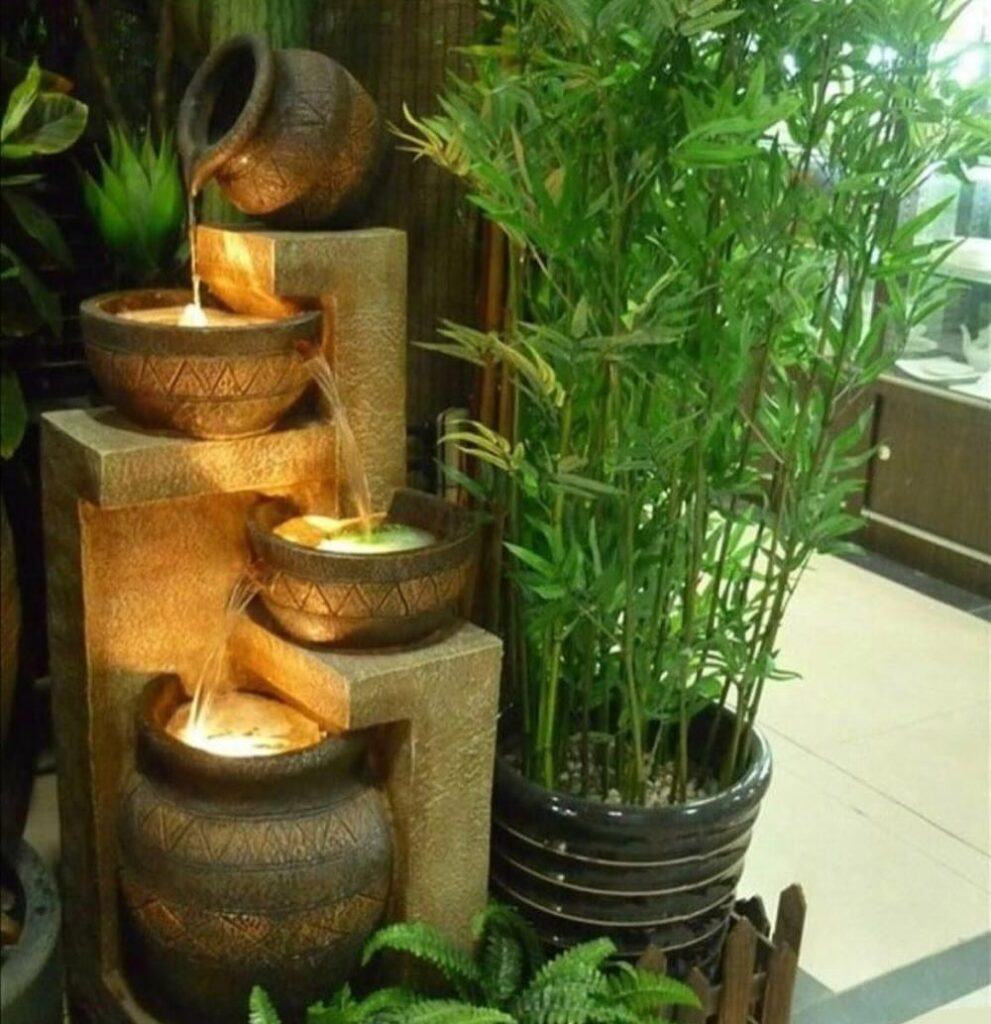
Where you place your fountain matters as much as how you build it.
- Near entrances for welcoming sound
- In garden beds for surprise and immersion
- Beside patios or decks as ambient noise
- Against fences or corners to soften hard angles
- At the center of a garden layout as a focal point
You can also tuck smaller ones into foliage so the water sound feels like it’s coming from within the plants themselves.
Some More Fountain Ideas:




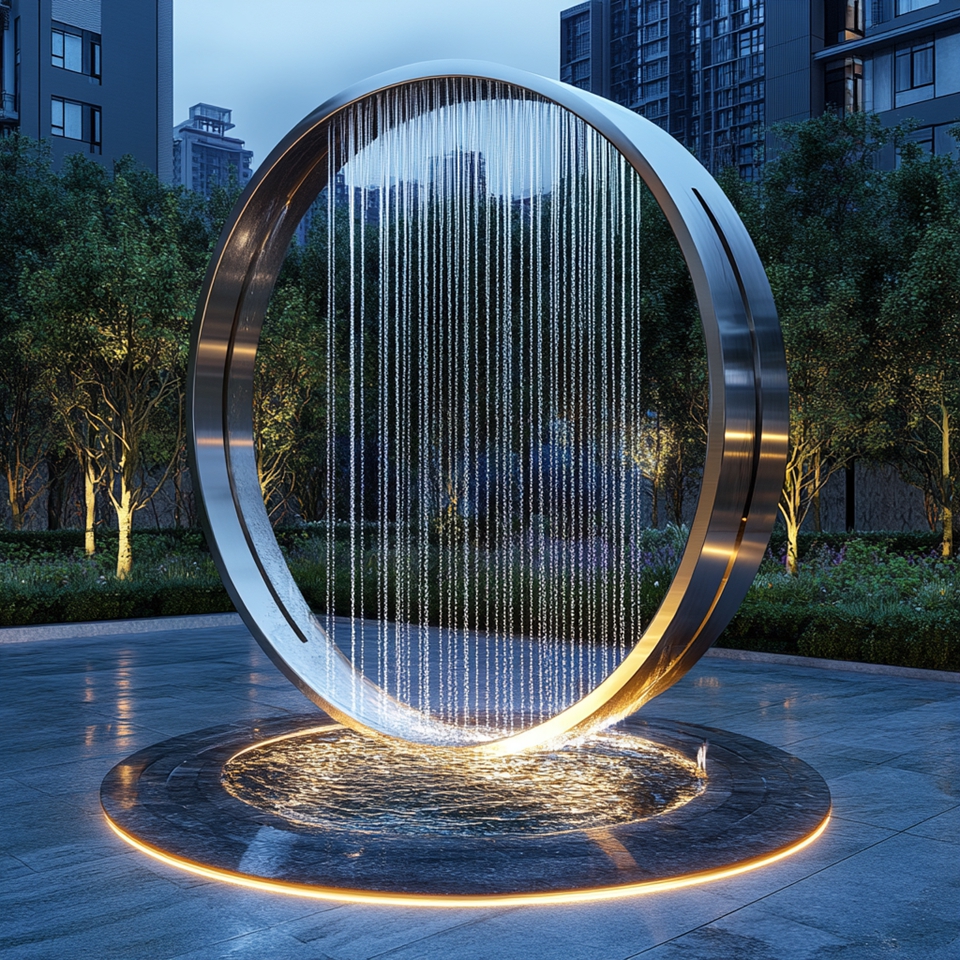

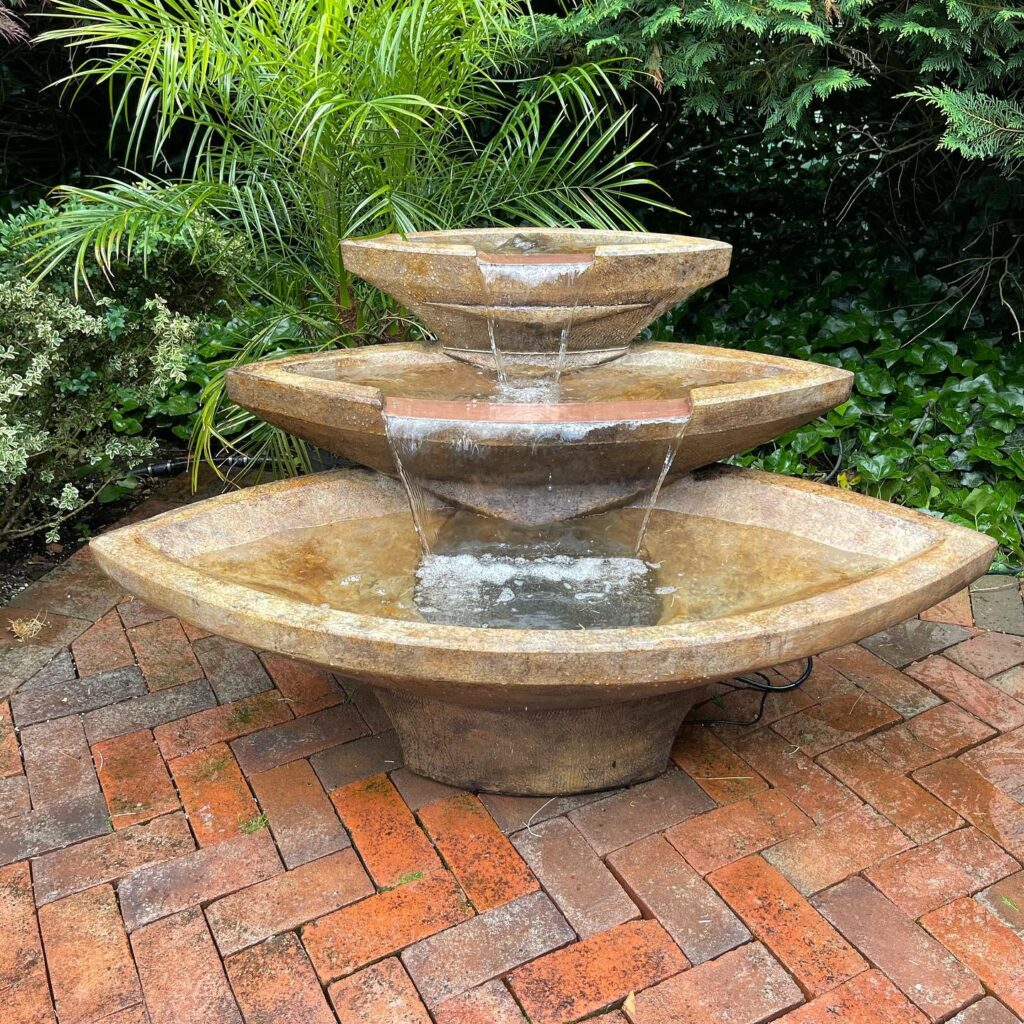

Final Thoughts
A DIY fountain doesn’t have to be complicated or costly. The goal is to create a moment of movement and calm that feels at home in your space. The photos you’ve collected show just how many ways this can be done—modern, rustic, vertical, recycled, natural, or whimsical.

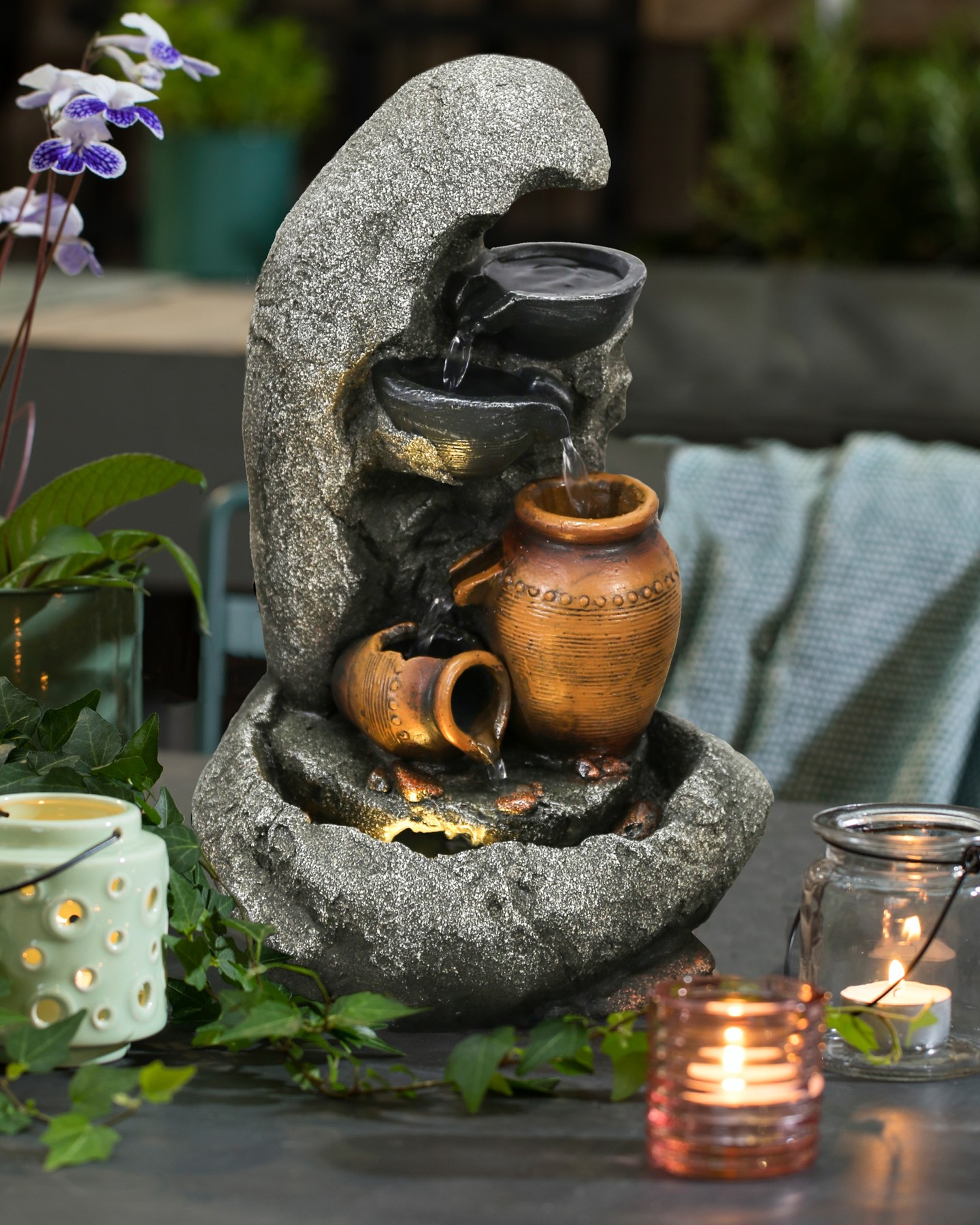



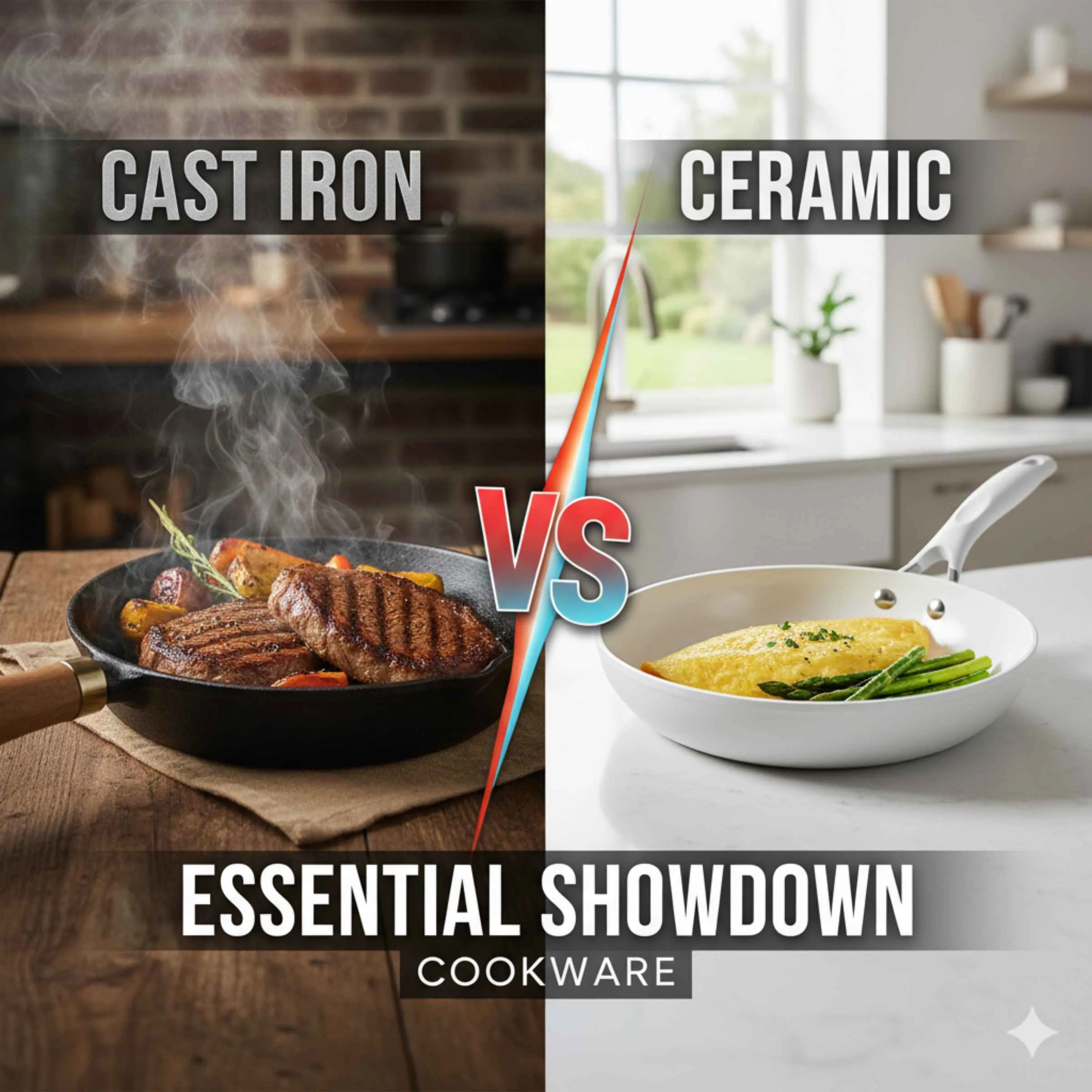
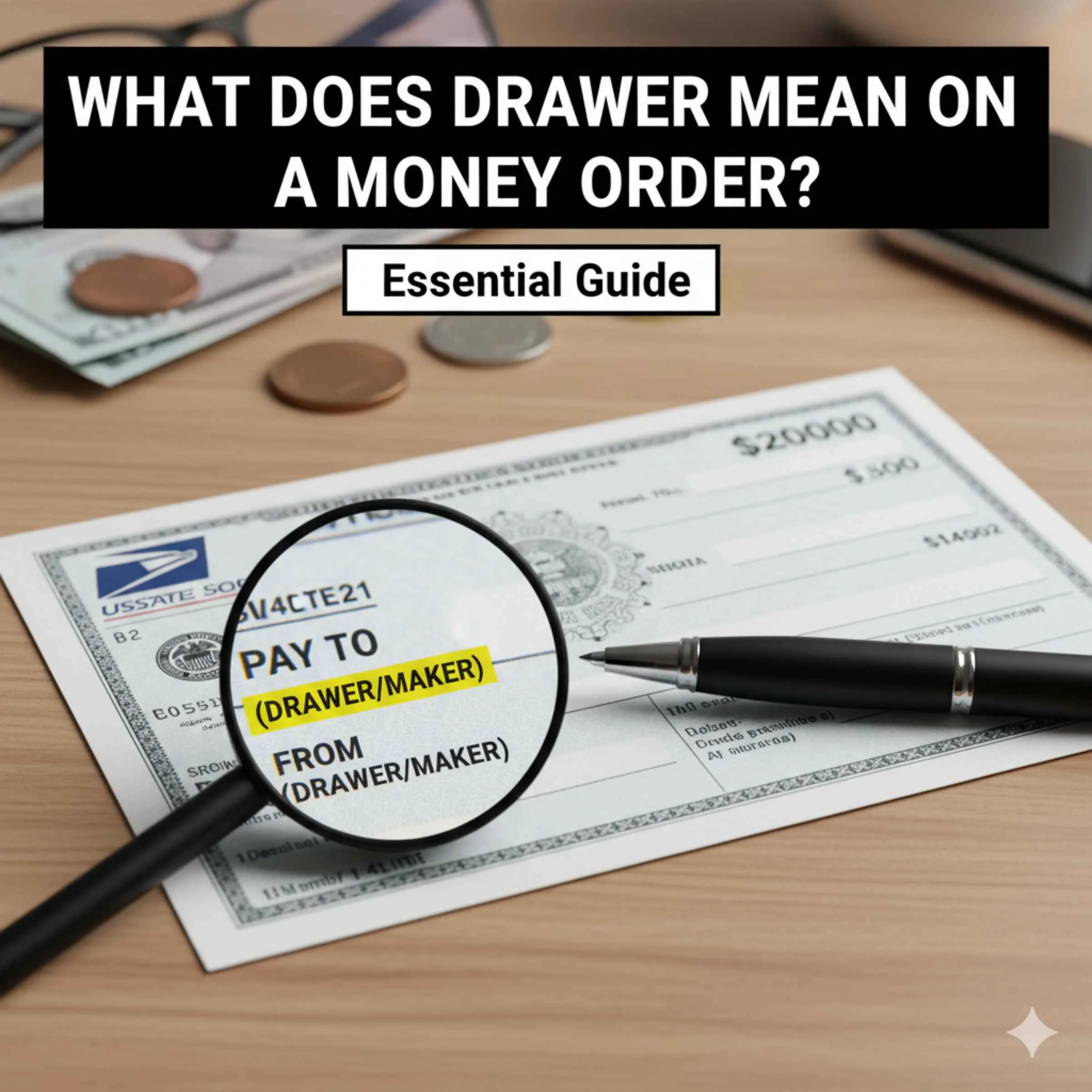

Leave a Reply